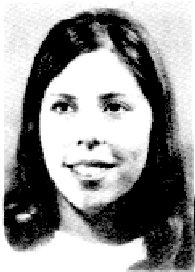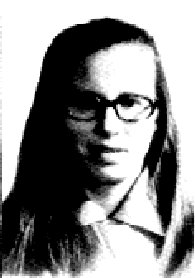This page is dedicated to
the three Angels of Mercy
who were captured and tortured,
prior to their deaths.
Of the three, only two
sets of remains have been returned to their homeland.
 |
Picture Courtesy of Angel Eyes Card shop
Music: "Candle In the Wind," by Elton John
 |
Evelyn Anderson
(Remains recovered and returned)
Beatrice Kosin (Remains recovered and returned) Other Personnel in Incident: Lloyd Oppeland Samuel Mattix (both released POWs) SYNOPSIS: In the late hours of
Saturday, October 27, 1972, a small group of North
Vietnamese soldiers invaded the southern Laotian town of
Kengkock, about thirty-five miles from Savannakhet. They
took prisoners, including Evelyn Anderson,
Beatrice Kosin, Lloyd Oppel and Samuel
Mattix, all missionaries working for Christian Missions
of Many Lands. Several other Americans managed to escape
and radioed for help. At 9:04 on Sunday morning following
the capture, an American helicopter arrived and evacuated
nine Filipinos, five Lao and the Americans who had
radioed for help. Less than an hour later, Sgt. Gerry
Wilson returned by helicopter to try and locate the two
American women. Lt.Colonel Norman Vaught immediately set
rescue plans into motion. The American Embassy in Vietnam
heard of the rescue plan and ordered from the highest
level that no attempt be made to rescue the women. The
peace negotiations were ongoing and it was feared that a
rescue attempt would compromise the sustained level of
progress at the talks. On November 2, 1972, a radio message
was intercepted which ordered that the two women be
executed. A captured North Vietnamese soldier later told
U.S. military intelligence that the women were captured,
tied back to back and their wrists wired around a house
pillar. The women remained in this position for five
days. After receiving orders to execute the two, the
Communists simply set fire to the house where they were
being held and burned the women alive. A later search of
the smoldering ruins revealed the corpse of Miss
Anderson. Her wrist was severed, indicating the struggle
she made to free herself. Anderson and Kosin were not in Laos to
kill, but to help. Their deaths must be blamed not only
on the Communists who set the fire that killed them, but
also on the faceless, nameless Americans who decided they
were expendable. Betty Ann Olson (Remains never recovered) Other Personnel in Incident: Mike
Benge (released POW); Henry F. Blood (captured); Rev.
Griswald (killed); Carolyn Griswald (daughter of Rev.
Griswald, survived first attack, died of wounds); Rev.
Zeimer (killed); Mrs. Robert Zeimer (wounded, first
attack, evaded, survived); Rev. and Mrs. Thompson; Miss
Ruth Whilting(all killed) SYNOPSIS: Michael D. Benge was born in
1935 and raised on a ranch in eastern Oregon. After
college at Oregon State, he applied to the CIA, because
he wanted to travel the world. CIA told him to try the
Agency for International Development (AID). AID sent him
to International Voluntary Services (IVS). After two
years in Vietnam with IVS, Benge transferred to AID and
served as an AID agricultural advisor. By the time of the
Tet offensive of 1968, he had been in-country five years,
working almost the whole time with the Montagnards in the
highlands. He spoke fluent Vietnamese and several
Montagnard dialects. On January 31, 1968, Benge was
captured while riding in a jeep near Ban Me Thuot, South
Vietnam. Learning of the Tet offensive strikes,
Benge was checking on some IVS volunteers who were living
in a hamlet with three companies of Montagnard rebels who
had just been through a lot of fighting as the NVA went
through the Ban Me Thuot area. His plan was to pick up
the IVS quot;kids" and then go down to pick up some
missionaries in the area. Benge was captured a few miles
from the Leprosarium at Ban Me Thuot. This center treated
anyone with a need as well as those suffering from
leprosy. It was at the Leprosarium that Rev. Archie
Mitchell, Dr. Eleanor Vietti, and Daniel Gerber had been
taken prisoner in 1962. The Viet Cong regularly harassed
and attacked the center in spite of its humanitarian
objectives. During the Tet offensive, the Viet Cong again
tried to wipe out the Christian missionary influence in
Dar Lac Province, and over a three day period attacked
the hospital compound several times. Betty Ann Olsen was born to Missionary
parents in Bouake, Ivory Coast. She had attended a
religious school and missionary college in Nyack, New
York. Curious about the way the other part of the world
lived, she went to Vietnam in 1964 as a missionary nurse
for Christian and Missionary Alliance, and was assigned
to the Leprosarium at Ban Me Thuot. Henry F. Blood was a
missionary serving as translator and linguist for
Wickcliff Translators at the Leprosarium. During one of the earlier attacks on
the hospital compound, three staff homes were destroyed,
one housing Rev. Griswald, who was killed, and his grown
daughter Carolyn, who survived the explosion but later
died of her wounds. During the same attack, Rev. and Mrs.
Zeimer, Rev. and Mrs. Thompson and Miss Ruth Whilting
were trapped and machine gunned. Only Mrs. Zeimer
survived her 20-30 wounds and was later evacuated to Cam
Ranh Bay. Blood and Olsen escaped injury for the moment. Two days later, on February 1, 1968,
as Olsen was preparing to escape with the injured
Griswald, she and Henry Blood were captured during
another attack on the hospital. For the next month or so,
Benge, Blood, and Olsen were held in a POW camp in Darlac
Province, about a day's walk from Ban Me Thuot, and were
held in cages where they had nothing to eat but boiled
manioc (a large starchy root from which tapioca is made). The Vietnamese kept moving their
prisoners, hiking through the jungles and mountains. The
camp areas, swept very clean of leaves to keep the
mosquito population down (and the ensuing malaria
threat), were clearly visible from the sky. Once, Benge
reports, an American aircraft came so close to the camp
that he could see the pilot's face. The pilot
"wagged his wings" and flew away. The
Vietnamese, fearing rescue attempts and U.S. airstrikes,
kept moving. For months Olsen, Blood, and Benge were
chained together and moved north from one encampment to
another, moving over 200 miles through the mountainous
jungles. The trip was grueling and took its toll on the
prisoners. They were physically depleted, sick from
dysentery and malnutrition, beset by fungus, infection,
leeches and ulcerated sores. Mike Benge contracted cerebral malaria
and nearly died. He credits Olsen with keeping him alive.
She forced him to rouse from his delirium to eat and
drink water and rice soup. Mike Benge describes Olsen as
"a Katherine Hepburn type...[with] an extra bit of
grit." In the summer of 1968, the prisoners,
again on the trail, were left exposed to the rain during
the rainy season. Hank Blood contracted pneumonia,
weakened steadily, and eventually died in July. (July
1968 is one of the dates given by the Vietnamese - the
other, according to classified information the U.S. gave
to the Vietnamese through General John Vessey, indicates
that Mr. Blood died on October 17, 1972. Mike Benge says
Blood died around July 4.) Blood was buried in a shallow
grave along the trail, with Olsen conducting graveside
services. Benge and Olsen were kept moving.
Their bodies were covered with sores, and they had
pyorrhea from beri-beri. Their teeth were loosening and
gums infected. They spent a lot of time talking about
good meals and good places to eat, planning to visit
their favorite restaurants together when they went home.
They moved every two or three days. Benge and Olsen were moved near Tay
Ninh Province, almost to Da Lat, then back to Quang Duc
Province. Olsen was getting weak, and the Vietnamese
began to kick and drag her to keep her moving. Benge,
trying to defend her, was beaten with rifle butts. Just before crossing the border into
Cambodia, Olsen weakened to the point that she could no
longer move. Ironically, in this area, near a tributary
to the Mekong River, fish and livestock abounded, and
there was a garden, but the food was denied to the
prisoners. They were allowed to gather bamboo shoots, but
were not told how to cook them. Bamboo needs to be boiled
in two waters to extract an acid substance. Not knowing
this, Olsen and Benge boiled their food only once and
were beset with immobilizing stomach cramps within a
half-hour; diarrhea soon followed. Betty Ann Olsen weakened and finally
died September 29, 1968 (Vessey information indicates
this date as September 26), and was buried by Benge. Finally, Benge was taken to Cambodia,
then turned over to the North Vietnamese, and spent over
three years in camps there, including a total of
twenty-seven months in solitary confinement. Upon his
return, he verified collaboration charges against eight
of his fellow POWs, in a prosecution effort initiated by
Col. Theodore Guy (this action was discouraged by the
U.S. Government and the effort was subsequently
abandoned.) Mike Benge then returned to Vietnam and
worked with the Montagnards until the end of the war. The Vietnamese have never attempted to
return the remains of Henry Blood and Betty Olsen. They
are two individuals that the Vietnamese could provide a
wealth of information on. Since they pride themselves on
being "humanitarians," it would not be in
keeping with this image to reveal the horror Olsen and
Blood endured in their hands. It is not surprising, then,
that the Vietnamese have not publicly told their stories. Source: Compiled by Homecoming II
Project 30 April 1990 from one or more of the following:
raw data from U.S. Government agency sources,
correspondence with POW/MIA families, published sources,
interviews. Updated by the P.O.W. NETWORK 1998.
[ Next |
Previous |
Skip |
Random Site ]
Proud Member of the
POW/MIA Freedom Fighters.
Rank/Branch: Civilian
Unit: Missionary, Christian Missions of Many Lands
Date of Birth: ca 1950
Home City of Record: Quincy MI
Date of Loss: 27 October 1972
Country of Loss: Laos
Loss Coordinates: 162600N 1051200E (WD215175)
Status (in 1973): Killed in Captivity
Category: Aircraft/Vehicle/Ground: Ground

Rank/Branch: Civilian
Unit: Missionary, Christian Missions of Many Lands
Home City of Record: Ft. Washakie WY
Date of Loss: 27 October 1972
Country of Loss: Laos
Loss Coordinates:162600N 1061200E (WD215175)
Status (in 1973): Killed in Captivity
Category: Aircraft/Vehicle/Ground: Ground

Rank/Branch: U.S. Civilian
Unit: Missionary Nurse/Christian Missionary Alliance
Date of Birth: 22 October 1934
Home City of Record: New York NY
Date of Loss: 01 February 1968
Country of Loss: South Vietnam
Loss Coordinates: 124049N 1080235E (AQ776008)
Status (in 1973): Killed in Captivity
Category: 1 Acft/Vehicle/Ground: Ground






This POW/MIA Ring
site
is owned by
Lest You Forget Site ID#157
[ List Sites |
Stats |
Chat/MessageBoard |
Join ]
Get a
POW/MIA Honor Page of your own.